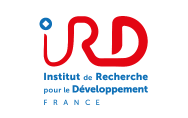Work thesis by Hamza JERBI within INAT (Tunisia) and IRD under the co-direction of Jamila Tahrouni (INAT) and Christian Leduc (IRD) and the co-supervision of Sylvain Massuel (IRD).
The hydrological system of the Merguellil basin is totally modified by anthropogenic activities, particularly soils and water conservation works and intensive groundwater pumping. These activities are progressively exercising pressures on hydrological processes and consequently on water resources. In the same time, the water resources evolution has itself contributed to the evolution of human activities. Indeed, the forms of society organization currently observed in the Merguellil basin are the result of long history of interactions between men and their environment. As a result, a growing awareness of the dramatic impact of this pressure on the sustainability of socio-hydrology system leads hydrologists to focus on increasing their knowledge of exchanges and feedbacks between human and hydrology. In the Merguellil basin, during the last 15 years, many works have been devoted to understand the co-evolution between water resources and society, some of which are of major interest. Within this overall attempt, this thesis studies the evolution of hydrological processes around the Merguellil wadi and its implication on local society. The main idea of the thesis subject comes from the fact that the Merguellil wadi is now intermittent over most of its course, but anthropological surveys and information from archival documents suggest that this has not always been the case. The local residents testify of the antiquity of the irrigation practices around the wadi, specifying that until the 1960s water was mobilized using channels by means of diversion thresholds on all its course. Thus, the disappearance of the base flow forced farmers to abandon the irrigation canals and opt for the installation of pumps, so that the wells on the alluvial terraces have been deepened and multiplied, while deep individual drilling was developed. The understanding of this co-evolution, calls for more extensive knowledge of the evolution of the surface water-groundwater interactions and on the dynamics of the related aquifers.






